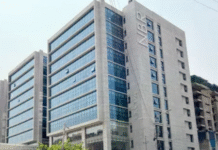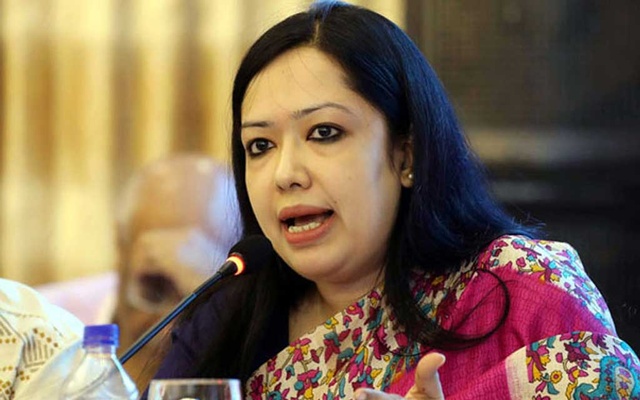TBS

Highlights:
- Dollar shortage eased, reserves rose to $25B, inflation fell
- Central bank reforms target governance, default loans, and bank mergers
- Some banks nationalised temporarily to protect depositors
- Bank Company Act amended to limit family control over boards
- Market-based exchange rate boosted remittances to $3B monthly
- Asset recovery efforts slow; $17–$20B laundered abroad estimated
The country’s banking sector was grappling with severe dollar shortage, rapid erosion of foreign exchange reserves, and liquidity crisis in dozens of banks that were unable to repay depositors when the interim government took over in August last year following the July uprising.
An unusual spike in the dollar rate pushed inflation to nearly 10.49% in August last year.
However, most of these major problems have been resolved over the past year, as inflation began to cool and the foreign exchange market stabilised, thanks to corrective measures taken by Bangladesh Bank after the change in regime.
The interbank exchange rate, which had surged to Tk128 per dollar last year, settled at Tk120 in July, with the taka appreciating due to an inflow of dollars.
Gross foreign exchange reserves rose by $6 billion, reaching nearly $25 billion in July, compared to a sharp fall to $18.61 billion in November last year.
The improved dollar supply helped bring inflation down to 8.55% in July, from 10.49% in August last year. Bangladesh Bank expects inflation to fall below 5% by next March.
The central bank has also initiated major reforms in the banking sector, including amendments to the Bank Company Act, the introduction of a Banking Resolution Act to enable the merger of weak banks and non-banks, streamlining loan classification rules in line with international standards, and amending the Bangladesh Bank Order to establish the central bank’s independence and prevent political interference.
Speaking to The Business Standard, Bangladesh Bank Governor Ahsan H Mansur – who assumed office in August last year – said corruption in the banking sector was “beyond imagination” and that the scale of default loans had been underestimated.
“Before taking charge at Bangladesh Bank, we thought default loans might be around 25%, when official data was showing 9%. In reality, we found that the figure will exceed 30%,” he said.
Bangladesh Bank, he added, is now revealing the true picture of default loans in the banking sector instead of keeping it hidden, and has implemented classification rules in line with international standards.
Restructuring looted banks
The governor said the first priority is to recover the 12–13 banks that have been looted and return depositors’ money. Legal reforms are under way, with loan classification rules now requiring overdue loans to be classified within three months, instead of the previous six months to a year.
He noted that banks with good boards and governance had largely avoided major problems, making good governance the main priority. Banks unable to recover on their own will be merged, though some, like Islami Bank and UCB, have already turned around.
However, some banks have non-performing loans (NPLs) of 70%–95% and cannot recover. These will be temporarily nationalised for depositor protection, merged, run as state-owned banks for a period, and later returned to the private sector with investment from domestic and foreign buyers.
Reducing family grip over bank boards
An amendment to the Bank Company Act will reduce the maximum number of board members from one family from four. At least 50% of directors will have to be independent and drawn from a Bangladesh Bank–approved panel.
The Money Loan Court Act is being revised to speed up loan recovery, with the governor stressing that defaulters must be recognised as such, even if they secure stay orders from the High Court.
The governor said the Bangladesh Bank Order 1972 should be amended to clearly set out the central bank’s core mandates.
The first will be to control inflation, a responsibility placed squarely on the central bank. “If the target is missed, the bank must explain why – whether due to a global shock, war, or price surge – but it must give a sound justification,” he said.
Inflation targets will be set by a strengthened joint advisory committee of Bangladesh Bank and the finance ministry. “The current committee lacks strength. The new one will decide the target range and the policies to achieve it, with no room for political interference,” he added.
The second mandate will be to protect financial sector stability. “This sector is now the weakest in the country. The central bank must have the authority to change boards, demand capital injections, or directly intervene in banks when required,” added the governor.
Shift to a market-based exchange rate
On 14 May 2025, Bangladesh Bank adopted a market-based exchange rate regime, allowing banks to trade dollars at freely negotiated rates, in line with IMF conditions.
This helped stabilise the forex market, encouraged remittances by narrowing the gap with informal rates, and prompted international lenders to release funds. Monthly remittances have since surged to nearly $3 billion, with the central bank buying dollars to rebuild reserves.
Policy rate hikes to tame inflation
When the interim government took office, the policy rate stood at 8.50%. It was raised in three steps to 10% by October 2024. Although the target of bringing inflation down to 6%–7% by mid-2025 was missed, it fell below 9% by June.
Bank mergers
Since August 2024, Bangladesh Bank has restructured the boards of 14 banks – Islami, Social Islami, IFIC, UCBL, Exim, First Security, Al-Arafah Islami, Global Islami, Union, National, NRB, NRBC, Meghna, and BCBL.
It now plans to merge five Islamic banks – Social Islami, Exim, First Security, Union, and Global Islami – whose default loans have soared to 60–90%.
The Bank Resolution Ordinance 2025 sets out the merger and liquidation process and makes top officials personally liable for fraudulent use of funds.
Slow progress on stolen asset recovery
Nine months after the formation of the asset recovery task force, Bangladesh has yet to present a single case – supported by internationally admissible evidence – for submission to a foreign court.
The task force, comprising 11 agencies and joint investigation teams, has failed to trace international assets – largely due to poor coordination and lack of expertise in building cases that meet global standards.
When asked how much stolen money could be recovered, Governor Mansur told TBS, “I don’t want to put a figure on it yet. Most of it is still a ‘bird in the bush’ – and you can only act on the ones already in the cage.”
He said, “We are trying, and in some cases we have succeeded – through asset freezing, tracking, and other measures. Our first goal is to freeze and secure the assets, and then repatriate the funds through legal processes. The entire procedure will take four to five years – that’s the international standard.”
He acknowledged: “Frankly, this is where we have some shortcomings. Some people ask if we have intentionally slowed the process. That’s not the case. We are pursuing two parallel tracks: the legal process, which is lengthy; and the negotiation process, where we try to recover some funds through dialogue.”
He further said some individuals are still in the country, but portions of their wealth are abroad. “We want to dismantle these criminal networks and bring the money back through negotiated settlements.”
The governor noted that an estimated $17–$20 billion was laundered from the banking sector – about 50% of total defaulted loans.









